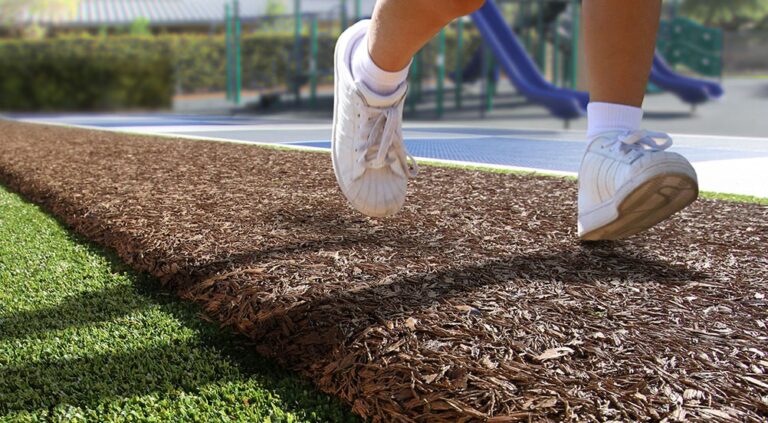
Artificial grass usually needs to be replaced after 8-10 years. However, artificial grass’s lifespan depends on several factors, including the quality of the turf, the amount of traffic it receives, and the climate in which it is installed. In some cases, artificial grass can last up to 15 years with proper maintenance.
How To Know When Its Time To Replace Artificial Grass
To determine if it is time to replace your artificial grass, there are a few things you can look for:
- Visible signs of wear and tear:
There are several visible signs of wear and tear that can occur on artificial turf, which may indicate that the turf is in need of maintenance or repair. Some common signs of wear and tear on artificial turf include:
- Fading: If the turf is starting to look faded or discolored, it may be a sign that it is getting old and needs to be replaced.
- Fraying: If the edges of the turf are starting to fray or come apart, it may be a sign of wear and tear.
- Matting: If the turf is starting to look matted or flattened, it may be a sign that it is getting worn out or that it is not being adequately maintained.
- Tears or punctures: If there are visible tears or punctures in the artificial turf, it may be a sign of damage that needs to be repaired.
If you notice any of these signs of wear and tear on your artificial turf, it may be time to replace your turf.
- Drainage issues:
Drainage issues can be a common problem with turf, particularly in areas that receive a lot of rainfall or have poorly draining soil. Poor drainage can lead to standing water on the surface of the turf, which can create a breeding ground for pests and diseases and can cause the turf to become waterlogged and damaged. To address drainage issues with turf, you may need to take a number of steps, such as:
- Improving the soil structure: Adding organic matter to the soil can help improve its structure and allow water to drain more easily.
- Grading the area: Ensuring that the ground is properly graded can help water drain away from the turf rather than pooling on top of it.
- Installing drainage channels: Installing channels or other types of drainage systems can help water drain away from the turf more effectively.
- Aerating the turf: Aerating the turf can help improve the drainage of water and prevent it from becoming waterlogged.
- Choosing the right turf grass: Some turf grasses are more resistant to waterlogging and are better suited to areas with poor drainage.
However, if these solutions have already been attempted, it may be time to replace your turf.
- Infill problems:
Infill is a material that is used in artificial turf to help support the blades of grass and provide a more realistic feel and appearance. Some common types of infill used in artificial turf include sand, rubber, and recycled tire crumb. The infill can help to keep the turf blades standing upright and provide a cushioning effect underfoot.
However, there can be problems with infill in artificial turfs, such as:
- Infill migration: Infill can sometimes move or shift around, causing unevenness in the turf surface.
- Compaction of infill: Over time, infill can become compacted, which can reduce its effectiveness in supporting the turf blades and providing cushioning.
- Infill deterioration: Some types of infill can break down over time, which can affect the appearance and performance of the turf.
To address infill problems with artificial turf, you may need to add additional infill, re-distribute the existing infill, or replace the infill entirely. In these cases, turf removal and replacement is often the best option.
Benefits of Artificial Grass for Playgrounds
In addition to requiring less maintenance than natural grass, artificial grass can also offer a number of benefits for playgrounds in terms of safety. Here are a few of the main advantages of using artificial grass for playgrounds:
- Soft landing: Artificial grass provides a soft, padded surface for children to play on, reducing the risk of injury from falls.
- All-weather use: Unlike natural grass, artificial grass can be used in all weather conditions, making it a safer option for playgrounds
.
- No mud: Artificial grass does not become muddy or slippery when wet, making it a safer option for playgrounds, especially during the rainy season.
- No allergies: Natural grass can trigger allergies in some people, but artificial grass does not contain pollen or other allergens, making it a safer choice for children with allergies.
- No pesticides: Artificial grass does not require the use of pesticides or herbicides, making it a safer option for children who may be sensitive to these chemicals.
- Low maintenance: Artificial grass requires minimal maintenance, making it a more convenient and safer option for playgrounds.
Conclusion
Artificial grass is a popular choice for playgrounds because of its safety and low maintenance benefits. While it can last for up to 15 years with proper maintenance, it is important to keep an eye on the condition of the turf and replace it when necessary. By choosing high-quality artificial grass and properly maintaining it, you can enjoy all of the benefits of synthetic turf for years to come.




